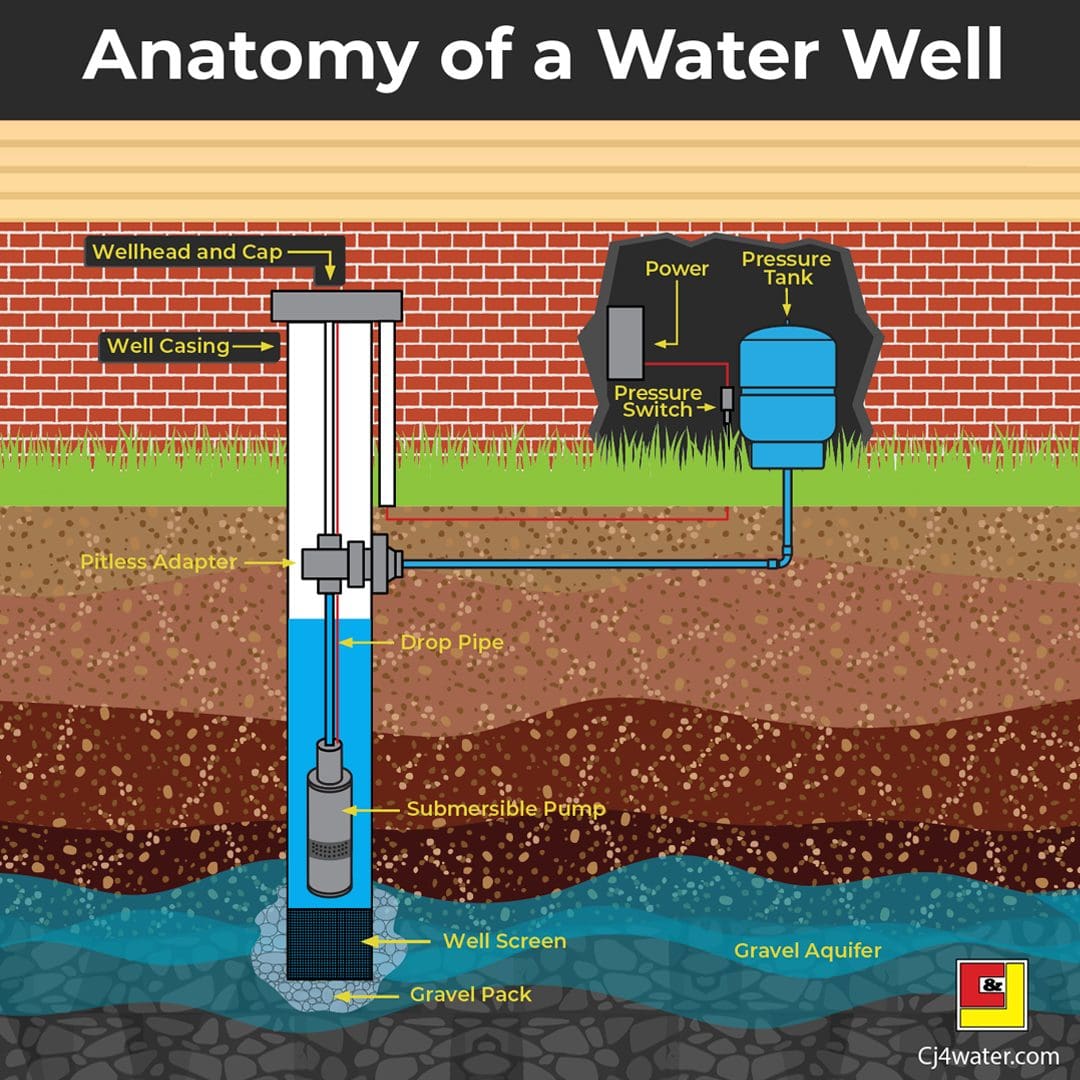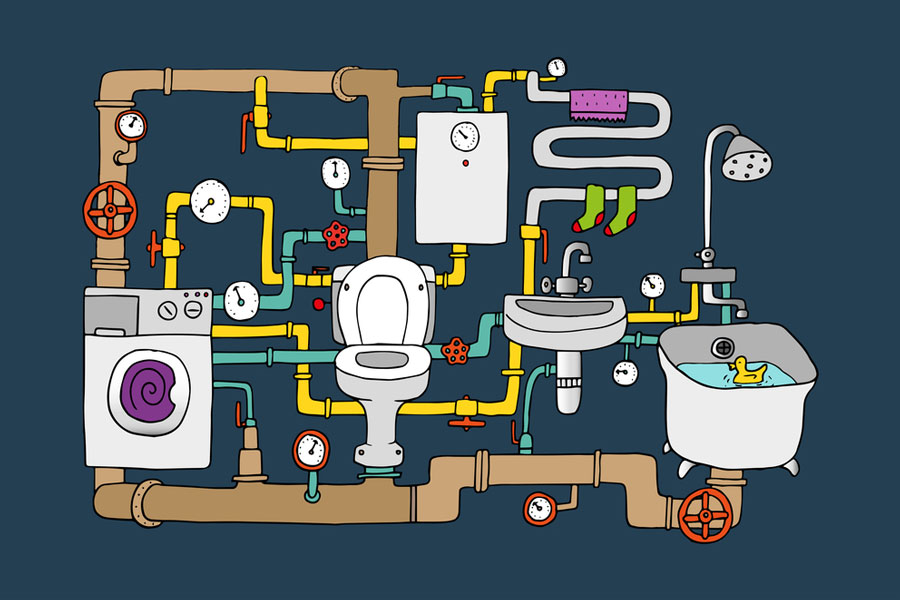The Fundamental Elements of Your House's Plumbing System
Get A QuoteThis post directly below on the subject of Exploring Your Homes Plumbing Anatomy is absolutely enjoyable. Have a go and make your own personal results.

Understanding just how your home's plumbing system functions is vital for every house owner. From supplying clean water for drinking, food preparation, and bathing to safely getting rid of wastewater, a well-kept plumbing system is essential for your family's wellness and comfort. In this thorough guide, we'll discover the complex network that comprises your home's plumbing and deal suggestions on upkeep, upgrades, and dealing with usual problems.
Intro
Your home's pipes system is more than just a network of pipelines; it's a complicated system that ensures you have accessibility to clean water and reliable wastewater elimination. Knowing its elements and how they interact can help you stop costly repair services and guarantee every little thing runs smoothly.
Basic Parts of a Plumbing System
Pipes and Tubes
At the heart of your pipes system are the pipes and tubing that lug water throughout your home. These can be made of different products such as copper, PVC, or PEX, each with its benefits in regards to resilience and cost-effectiveness.
Fixtures: Sinks, Toilets, Showers, and so on.
Components like sinks, toilets, showers, and bathtubs are where water is utilized in your home. Comprehending exactly how these components connect to the plumbing system assists in detecting troubles and planning upgrades.
Shutoffs and Shut-off Points
Valves manage the circulation of water in your pipes system. Shut-off shutoffs are crucial during emergencies or when you need to make repair work, enabling you to separate parts of the system without interfering with water flow to the entire house.
Water System System
Key Water Line
The major water line links your home to the metropolitan water or a private well. It's where water enters your home and is distributed to various fixtures.
Water Meter and Pressure Regulator
The water meter actions your water use, while a stress regulator ensures that water moves at a secure pressure throughout your home's pipes system, protecting against damages to pipelines and components.
Cold Water vs. Warm water Lines
Recognizing the difference in between cold water lines, which provide water straight from the major, and hot water lines, which bring heated water from the water heater, helps in troubleshooting and planning for upgrades.
Drainage System
Drain Pipes Water Lines and Traps
Drain pipes carry wastewater away from sinks, showers, and toilets to the sewage system or septic system. Catches stop drain gases from entering your home and likewise catch particles that can trigger blockages.
Ventilation Pipes
Ventilation pipes enable air into the drain system, avoiding suction that could slow water drainage and create catches to empty. Proper air flow is necessary for preserving the stability of your plumbing system.
Importance of Correct Water Drainage
Making sure correct water drainage stops backups and water damage. Regularly cleaning up drains and maintaining traps can prevent pricey repair services and extend the life of your pipes system.
Water Heater
Types of Hot Water Heater
Hot water heater can be tankless or conventional tank-style. Tankless heating units warmth water as needed, while tanks save heated water for immediate usage.
Upgrading Your Pipes System
Factors for Upgrading
Upgrading to water-efficient components or replacing old pipelines can enhance water quality, minimize water costs, and boost the value of your home.
Modern Pipes Technologies and Their Benefits
Explore modern technologies like smart leak detectors, water-saving commodes, and energy-efficient hot water heater that can save cash and decrease ecological impact.
Price Considerations and ROI
Compute the in advance expenses versus long-term financial savings when considering plumbing upgrades. Several upgrades pay for themselves with reduced energy bills and less repairs.
How Water Heaters Attach to the Plumbing System
Recognizing how water heaters attach to both the cold water supply and hot water circulation lines helps in identifying issues like inadequate hot water or leaks.
Upkeep Tips for Water Heaters
Routinely flushing your hot water heater to remove debris, examining the temperature setups, and inspecting for leaks can prolong its life-span and improve power performance.
Usual Plumbing Problems
Leaks and Their Reasons
Leaks can happen as a result of aging pipes, loosened installations, or high water pressure. Attending to leakages quickly stops water damages and mold and mildew growth.
Blockages and Clogs
Clogs in drains and toilets are typically triggered by purging non-flushable things or a buildup of grease and hair. Using drain screens and being mindful of what decreases your drains pipes can protect against clogs.
Signs of Plumbing Issues to Expect
Low water pressure, sluggish drains pipes, foul odors, or unusually high water expenses are indicators of potential plumbing issues that need to be addressed immediately.
Pipes Maintenance Tips
Routine Examinations and Checks
Schedule annual pipes assessments to capture issues early. Search for indications of leakages, rust, or mineral build-up in taps and showerheads.
DIY Maintenance Tasks
Basic jobs like cleaning faucet aerators, checking for bathroom leakages using dye tablets, or insulating exposed pipes in cool environments can stop significant pipes issues.
When to Call a Professional Plumbing Technician
Know when a pipes concern requires professional knowledge. Trying intricate fixings without proper expertise can bring about even more damage and higher repair expenses.
Tips for Decreasing Water Usage
Simple behaviors like dealing with leaks quickly, taking much shorter showers, and running complete tons of laundry and dishes can preserve water and reduced your utility bills.
Eco-Friendly Pipes Options
Think about sustainable plumbing products like bamboo for flooring, which is durable and environmentally friendly, or recycled glass for kitchen counters.
Emergency situation Preparedness
Steps to Take Throughout a Pipes Emergency
Know where your shut-off valves lie and just how to shut off the water supply in case of a burst pipeline or significant leakage.
Value of Having Emergency Calls Helpful
Keep get in touch with information for neighborhood plumbing professionals or emergency solutions easily available for fast action during a pipes crisis.
Ecological Impact and Preservation
Water-Saving Fixtures and Devices
Setting up low-flow faucets, showerheads, and commodes can considerably reduce water use without sacrificing efficiency.
DIY Emergency Situation Fixes (When Appropriate).
Temporary repairs like making use of duct tape to spot a leaking pipeline or positioning a bucket under a trickling faucet can decrease damage till an expert plumber arrives.
Verdict.
Understanding the makeup of your home's plumbing system empowers you to keep it effectively, conserving money and time on repairs. By complying with normal upkeep routines and remaining informed regarding modern plumbing modern technologies, you can ensure your pipes system runs effectively for several years to come.
The Anatomy of Your Home s Plumbing System
Understanding the anatomy of your home s plumbing system is essential for any homeowner. It not only helps in identifying potential issues but also facilitates effective communication with professionals when repairs or upgrades are needed. Your home s plumbing system is more than just pipes and faucets; it s a complex network that ensures the efficient and hygienic flow of water in and out of your house. In this blog, we ll dissect the crucial components of your home s plumbing system. For those in Antelope Valley, Brock Plumbing is your trusted partner for all your plumbing needs, ensuring your system functions smoothly and efficiently.
Water Supply System
Main Water Line: This is where your home s plumbing system begins. The main water line connects your home to the public water supply or a private well. Pipes and Shut-off Valves: Pipes distribute water throughout your home. Shut-off valves are crucial for controlling the flow of water and making repairs without shutting off the entire system. Drainage System
Drain Pipes: These pipes carry waste and water away from sinks, toilets, and showers. Vents: Vents allow sewer gases to escape and help maintain proper pressure in the drainage pipes, ensuring efficient flow of wastewater. Traps: Every fixture has a trap, a U-shaped pipe that holds water and prevents sewer gases from entering your home. The most common is the P-trap under sinks. Fixtures and Appliances
Fixtures and appliances are the most interacted with parts of your plumbing system. They include sinks, toilets, showers, dishwashers, and washing machines. Each fixture and appliance has its own supply and drainage connection, ensuring they receive clean water and can dispose of wastewater effectively.
Water Heating System
Your water heater is a crucial component, providing hot water to various fixtures and appliances in your home. It can be tank-based or tankless, with each type having its own set of advantages and maintenance requirements. Regular maintenance is essential to ensure efficient operation and extend the lifespan of the unit.
Sump Pump
In areas prone to flooding or with high water tables, a sump pump is an essential part of the plumbing system. It s installed in the lowest part of your basement or crawlspace and pumps out water that accumulates, preventing flooding and protecting your home from water damage.
Septic System
Homes that are not connected to a municipal sewer system have a septic system and an underground wastewater treatment structure. Understanding how to maintain your septic system is crucial to prevent backups, odors, and early system failure.
Conclusion
Your home s plumbing system is a complex and essential network, ensuring the efficient and hygienic flow of water in and out of your property. Understanding its key components helps in maintaining it properly and identifying issues before they escalate into major problems. For residents in Antelope Valley, Brock Plumbing is dedicated to providing top-notch services, ensuring that every part of your plumbing system is in perfect working order. Trust our team of professionals to handle all your plumbing needs, ensuring your home remains comfortable, safe, and well-maintained.
https://brockplumbinganddrains.com/blog/the-anatomy-of-your-homes-plumbing-system/

As a devoted person who reads on Plumbing Installation 101: All You Need to Know, I figured sharing that piece was important. Kindly set aside a second to distribute this entry if you enjoyed it. Thanks for your time. Don't hesitate to come visit our blog back soon.
Click Here